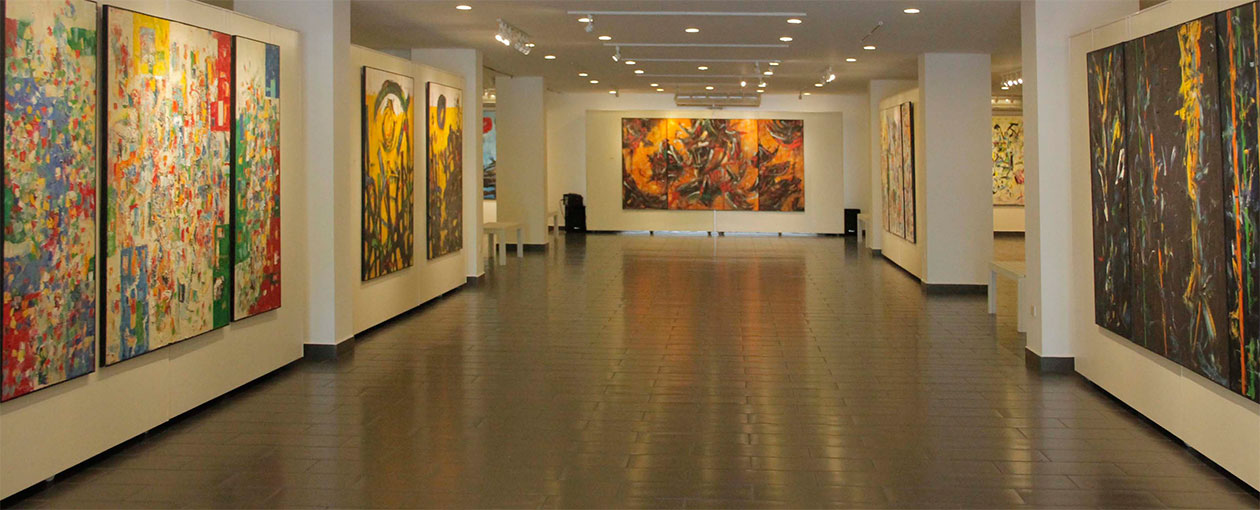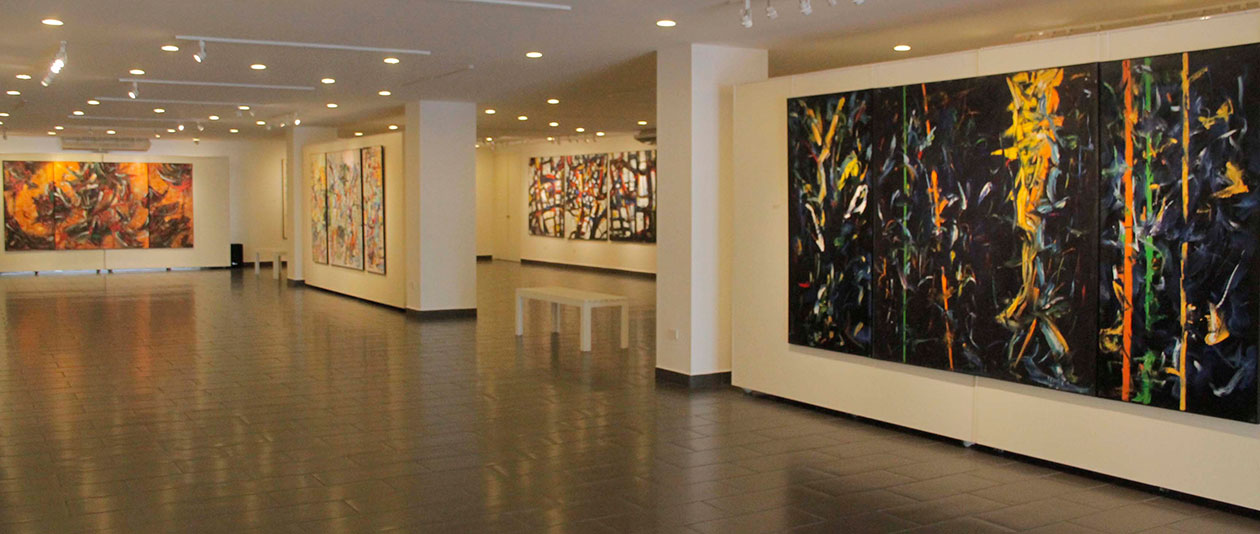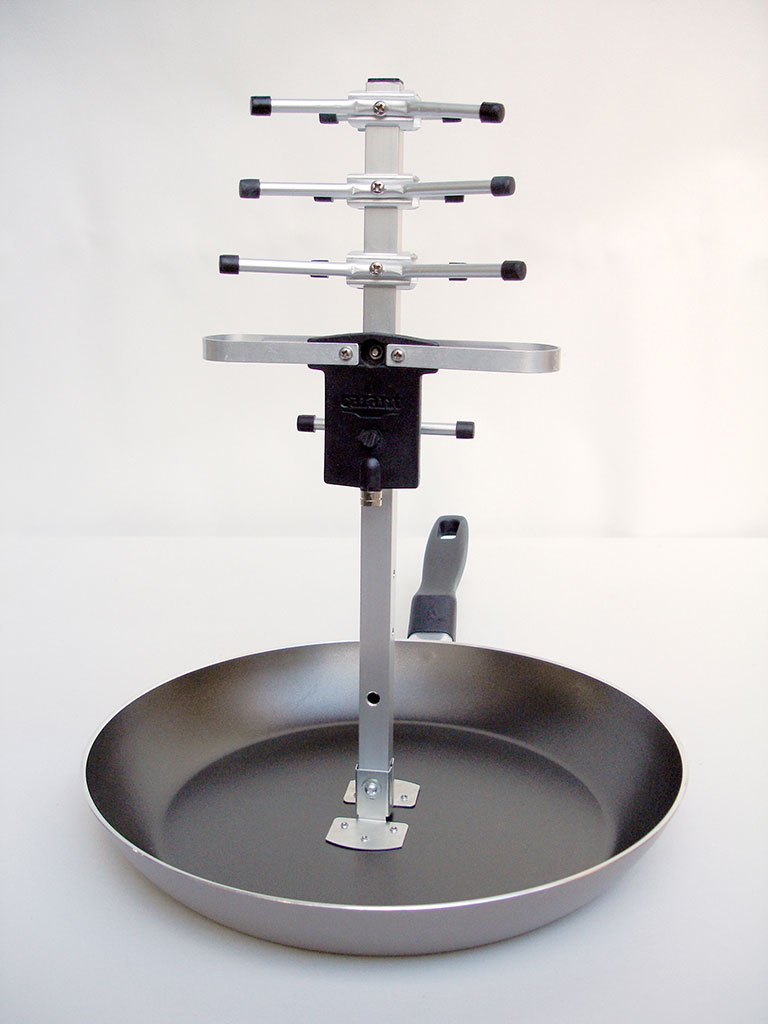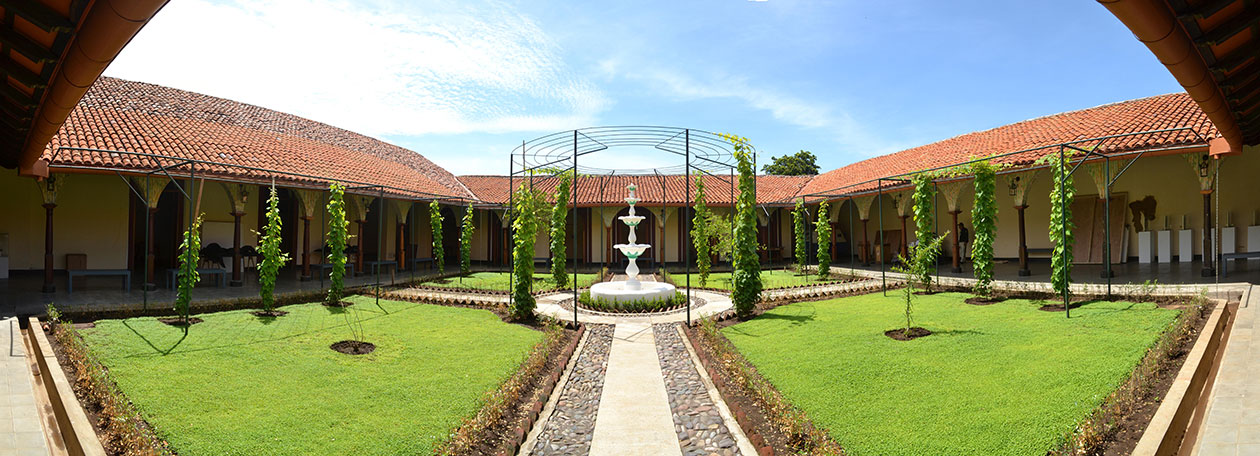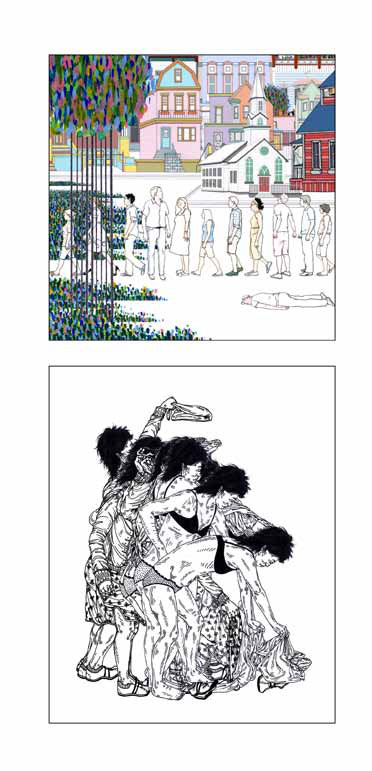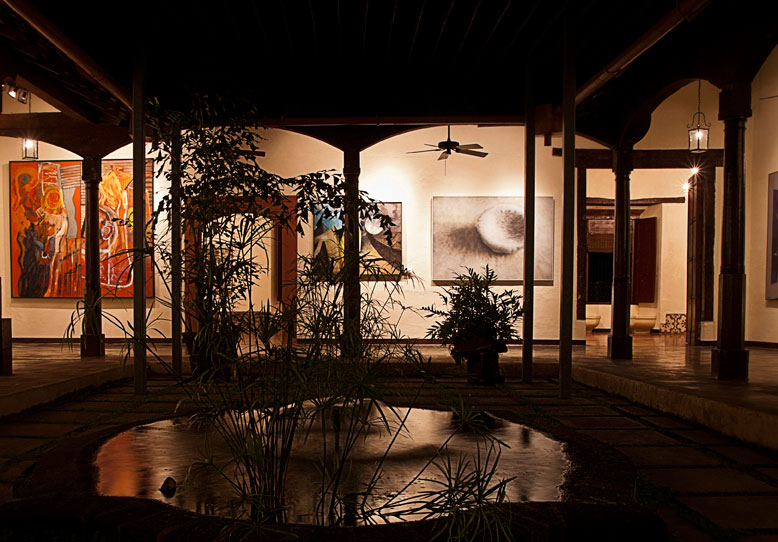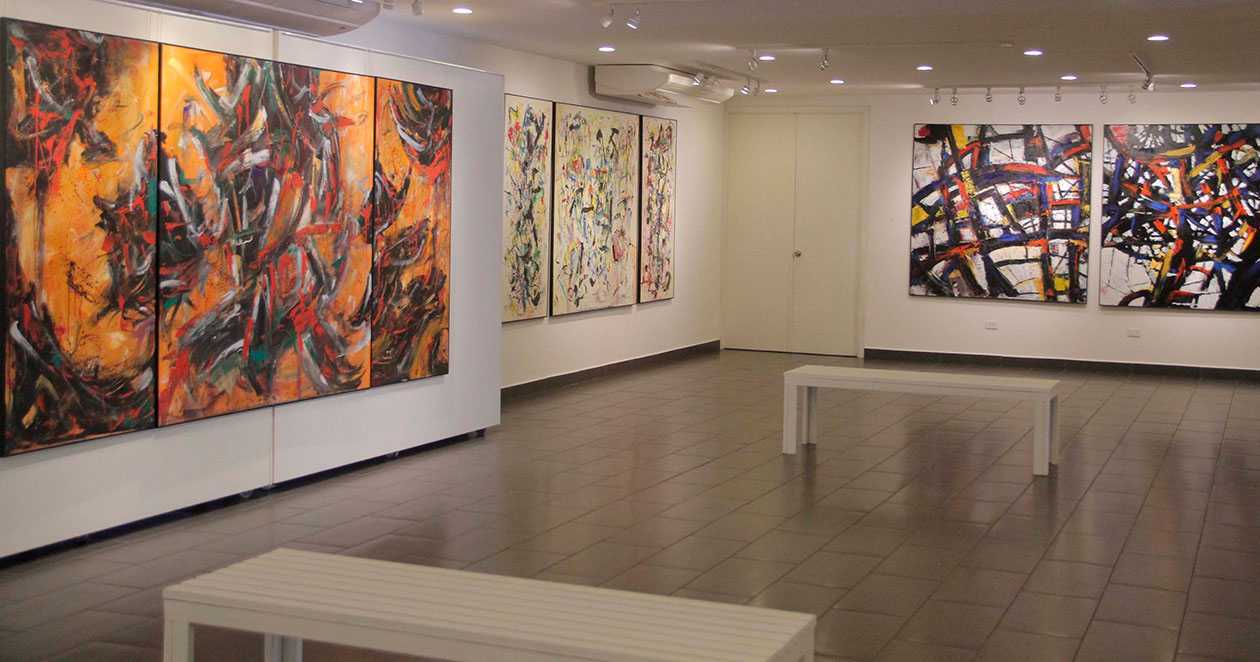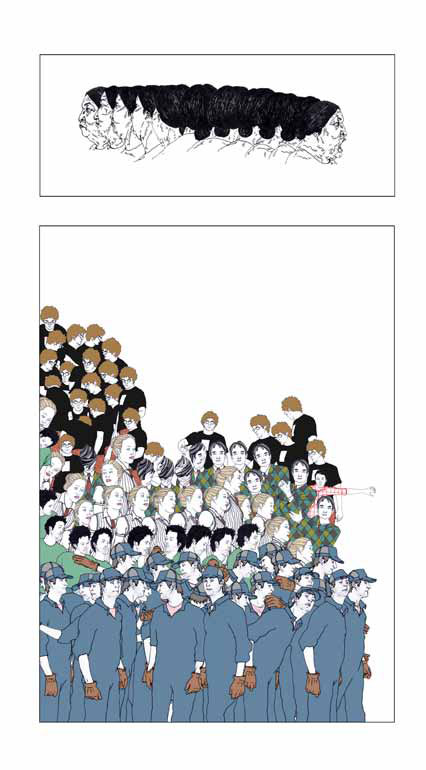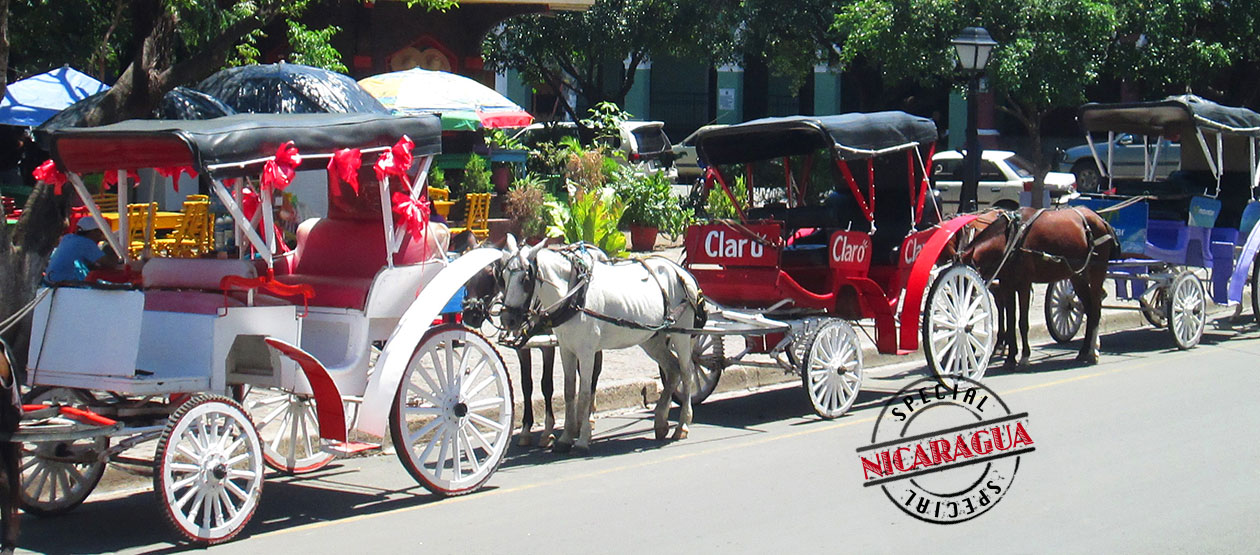
Nicaragua La Tierra de Lo Mas
November 1, 2015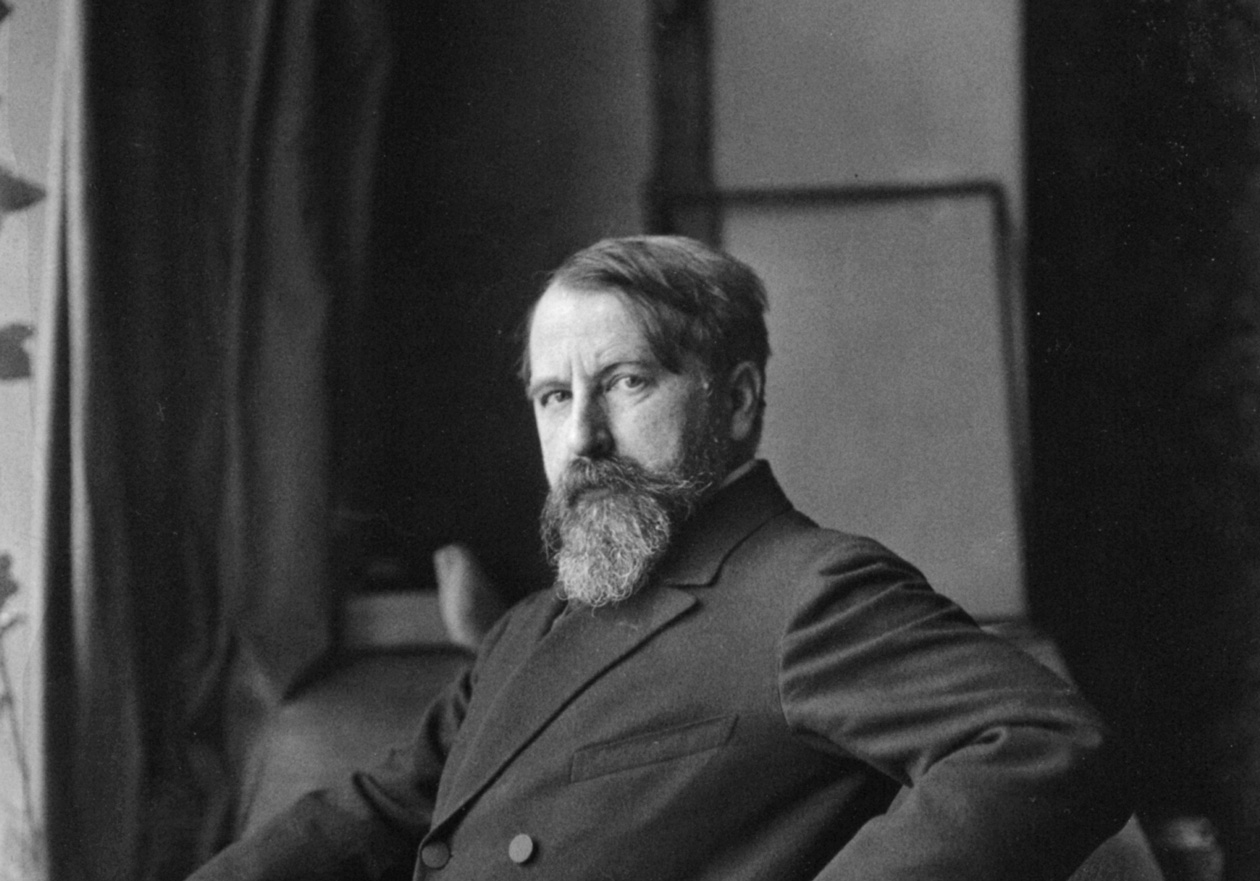
Eyes Wide Open at Last: Author’s Archive is Saved for World
November 8, 2015The Ortiz-Gurdián Foundation and its Contribution to the Cultural Development of Nicaragua and Central America
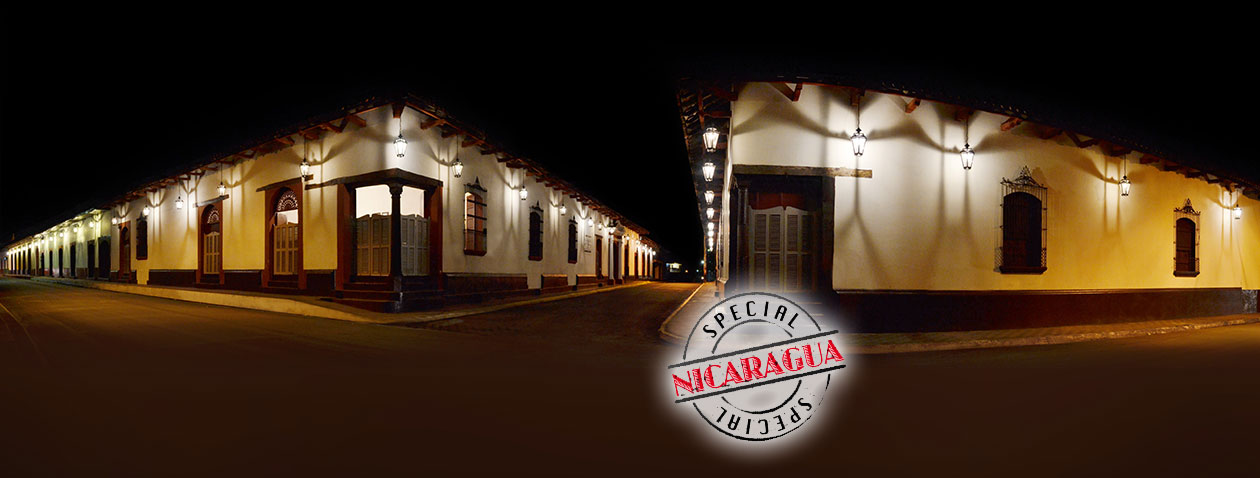
From a chance meeting on an aeroplane, two Nicaraguan philanthropists, passionate about the art they collected, decided to put their money where their mouths were, so to speak, and with the help of major backers across the region, the Central American Biennale was born. Dantemag tells the amazing story of the Ortiz-Gurdian Foundation.
In 1996, Patricia Gurdián de Ortiz and Ramiro Ortiz Mayorga, art collectors from León, Nicaragua, decided to create the Ortiz-Gurdián Foundation as a non-profit organisation whose purpose would be to promote the country’s cultural development. The immediate goal was to devise a mechanism that would motivate Nicaraguan artists to participate in an event at which they could compete under equal conditions and have their work reviewed by an international panel of experts. The aim was to position Nicaraguan art at the regional and international levels.
The outcome of this effort was the Nicaraguan Biennale, which emerged in tandem with the Visual Arts Biennale of the Central American Isthmus. As is the case with the other biennales held in the region, there is a close relation between the national and regional exhibitions.
Ramiro Ortiz Mayorga and Fernando Paiz – the latter being a member of the Paiz family, which has sponsored the Paiz Biennale in Guatemala since 1978 – met on a flight in 1996. In the course of their conversation, they both realised they each had the same idea in mind: namely, the need to forge a vehicle in order to promote the art being created in the countries over the region as a whole, and that to achieve this, a Central American Biennale should be organised. Needless to say, such a proposal meant that before it could take place, national exhibitions for the individual countries would have to be held in order to select the artists who would subsequently participate in the Central American Biennale.
Ortiz Mayorga, who is also the creator and manager of financial companies in the region, had the contacts necessary to motivate his colleagues in Central America to establish and organise biennales in each of their countries. After several meetings in Guatemala with potential sponsors and invited guests from the art world, who were to act as national coordinators, the Painting Biennale of the Central American Isthmus was created. The goal had been realised. It was still 1996, and the national chapters needed to be created immediately so their biennales could begin in 1997, paving the way for the first regional exhibition. It was agreed that the headquarters would rotate among the six capitals, and Guatemala asked to be allowed to host the first such event.
Current and previous sponsors include the following :The Fernández Pirla Foundation, Panama, until 2008 after which the Alemán Healy Foundation and the Saint Georges Bank took over; from Costa Rica Entrepreneurs for Art; The Ortiz-Gurdián Foundation from Nicaragua; in Honduras, the PROMERICA Bank took over in 2004 from The Foundation for Honduran Man; the PROMERICA Bank is also the El Salvador sponsor and in Guatemala, the Paiz Foundation is the backer.
In each country, a coordinator was charged with assembling the biennale. To date, and in the order in which the countries appear above, these coordinators are as follows: Carmen Alemán; Illeana Alvarado; Juanita Bermúdez; Bonnie de García, until 2004, replaced by América Mejía and Bayardo Blandino, of Women for the Arts; Rodolfo Molina (R.I.P.), until March 2013, replaced by Rafael Alas; and Ángel Arturo González (R.I.P.), until 2008, when Adrián Lorenzana took over.
However, the idea as originally conceived, namely a biennale strictly for painting, proved to be a barrier for younger artists, as they tended to communicate spontaneously in contemporary forms of expression. Therefore the second round of biennales, both in the individual countries and at the regional exposition held in Costa Rica, accepted works from artists that went beyond the boundaries of traditional painting. This led the sponsors to rethink the concept, and the decision was taken to widen the scope of the Visual Arts Biennale of the Central American Isthmus. Ultimately, the local biennales too had to be expanded to include this broader concept.
In large measure, the Visual Arts Biennale, together with other cultural institutions in the region, has become the ideal platform to enable artists to project themselves beyond Central America and make their art known at an international level, and where their projects can be curated by recognised experts invited for that purpose. The result has been to position Central American artists at international events where they are serious contenders as, albeit using the same languages of worldwide contemporary art, they assert their national identities since the social and political realities of their respective countries are often markedly reflected in their works. Another advantage has been that Central American artists are now acquainted and can discuss and analyse each other’s work while travelling between countries and feeling at home in any of them. Some Central American artists have attained a high degree of professionalisation, allowing them to curate exhibitions or create specialised spaces in contemporary art. Such are the cases of Diablo Rosso in Panama, Proyectos Ultravioletas in Guatemala and Espira Espora in Nicaragua, among others.
THE ORTIZ-GURDIÁN FOUNDATION ART CENTRES
IN LEÓN AND MANAGUA
Taking as their starting point their passion for collecting, Patricia and Ramiro Ortiz decided to share part of their artistic wealth with their fellow countrymen and women, as well as with foreign visitors to Nicaragua. The Norberto Ramírez House was inaugurated in 2000 and became the cornerstone of the Ortiz-Gurdián Foundation Art Centre in León, their hometown, which also happens to be one of the most beautiful colonial cities in Central America. Currently, the Centre occupies four houses, each home to a specific collection.
The four houses, with their wide interior hallways, salons and gardens, date from the eighteenth and nineteenth centuries and are examples of the most authentic Leonese architecture of those periods. They belonged to illustrious local families and from 1999 onwards were bought and restored by the Ortiz Gurdián family.
Norberto Ramírez House
In the nineteenth century, this house was the residence of Norberto Ramírez (1802-1859). In his book Nicaragua, its People, Landscapes and Monuments, the American archaeologist and diplomat Ephraim George Squire noted that “When I visited the country in 1849, the government was headed by Norberto Ramírez as Supreme Director …” Squire had come to Nicaragua as chargé d’affaires for the United States government, and presented his diplomatic credentials to Ramírez in the main hall of this very house.
Today, the Norberto Ramírez House contains the collection titled “From Western to Nicaraguan Art”, which consists of a broad sample of European Art from the late fifteenth century to our times. There are also a few examples of pre-Columbian art, a collection of contemporary ceramics from the village of San Juan de Oriente, and a representative exhibition of the European vanguard movements. Latin America makes its presence felt by its colonial art of the eighteenth and nineteenth centuries, colonial imagery and works of some of its most representative practitioners. There is also a selection of Nicaraguan masters, including Armando Morales among others.
It is worth noting that Norberto Ramírez was the great-great-grandfather of Ramiro Ortiz Mayorga.
The Delgadillo House
Originally, this was part of Norberto Ramirez’s house, but as happened frequently in León, very large houses were eventually broken up and shared among sons and grandsons, and the property drifted into other hands until the Ortiz Gurdián family acquired this part of it from the Delgadillo family. Once restored, it was inaugurated in December 2006, with a temporary showing of engravings by Rembrandt.
Since 2007, the collection titled “Integration” has been on display, made up of works by Central American artists invited to participate in an exhibition which took place in Tegucigalpa, Honduras, in September, 2001, to commemorate the fortieth anniversary of the foundation of the Central American Bank for Economic Integration (CABEI).
In its wide interior hallways hang significant works by the Nicaraguan master Rodrigo Peñalba and some of his students who were members of the Praxis group (1963-1973). In addition, there are reproductions of petroglyphs made by artists such as Orlando Sobalvarro, Alejandro Aróstegui and Roger Pérez de la Rocha, as well as a contemporary interpretation of petroglyphs by Luis Morales Alonso in embossed aluminum and oil.
The Derbyshire House
Located on the east side of the Norberto Ramírez House, the Derbyshire House opened its doors to the public in September, 2002. It was originally built in the late nineteenth century by the Derbyshire family, a member of which was Doctor Juan Derbyshire, a distinguished ophthalmologist with a degree from the Sorbonne. He was one of the most respected medical professionals in León during the first half of the twentieth century. The building houses a sample of Latin American painting, a restoration workshop, the ticket-office, a gift shop and a room for temporary exhibits in which are currently on display a series of recent oil paintings by Nicaraguan artist Ramiro Lacayo Deshon under the title “From Figurative to Abstract Art.”
The Deshon House
This fine building was acquired in 2012 and named after its original owners. It was restored to serve as a museum of contemporary art, consisting mainly of works which won prizes at the Nicaraguan Visual Art Biennales, as well as many others displayed at the Visual Art Biennales of Central America. The house is typical of the Leonese style of the nineteenth century, and consists of four interior hallways with a garden at its centre and large rooms which in the past were the living quarters of the Deshon family. Although, when viewed from the outside, the building is not a continuation of the Norberto Ramírez House, they interconnect on the inside. There is a room for temporary exhibits which is currently showing works by prestigious Nicaraguan artist Patricia Belli, who has participated in most Nicaraguan biennales.
ORTIZ-GURDIÁN FOUNDATION – BANPRO ART CENTRE
The Ortiz-Gurdián Foundation – BANPRO Art Centre was inaugurated in December 2013, with support from the Banco de Producción (BANPRO), which in turn is part of the PROMERICA group, present in Central America, Panama, the Dominican Republic and Ecuador. The Foundation has come to be a cultural space and research centre intended for national artists as well as foreign scholars. It has a significant reference centre with materials and documents on the history of contemporary Nicaraguan art, temporary exhibition rooms and audiovisual facilities. It was inaugurated with the exhibition entitled “Conversations with Abstract Expressionism”, by Ramiro Lacayo Deshon, who using his own language embarks upon an artistic dialogue with twelve artists from this important period in North American art: Willem De Kooning, Sam Francis, Helen Frankenthaler, Arshile Gorky, Adolph Gottlieb, Hans Hofmann, Franz Kline, Joan Mitchell, Robert Motherwell, Barnett Newman, Jackson Pollock and Mark Rothko.
Starting in 2004, as part of its cultural programme, the Foundation has organised travelling exhibitions of the lithographic series of the universal art in its collection, taking in some of the most important Central American museums. Among these works are the Rembrandt engravings, The Odyssey (illustrated by Chagall), Imaginary Portraits (one of the last of Picasso’s works) and European painting of the seventeenth and eighteenth centuries. Furthermore, the Foundation has edited the catalogues accompanying each of the biennales and travelling exhibitions, as well as books on Nicaraguan and world art, among which are From Western to Nicaraguan Art, by Dr. María Dolores Torres, which describes in detail the collection gathered at the Norberto Ramírez House of the Ortiz-Gurdián Foundation Art Centre; León: the Shadow of Pedrarias, by Dr. Nicolás Buitrago Matus; and The León Cathedral, which includes texts by poet Julio Valle-Castillo and photographs by Rodrigo Castillo.
Through the Ortiz-Gurdián Foundation, BANPRO has sponsored the Mariana Sansón National Prize for Poetry Written by Women, which has been awarded annually since its inception in 2005.
In brief, this is a detailed description of Ortiz-Gurdián Foundation activities undertaken by means of its cultural programme. From the beginnings of their meeting on a plane Ramiro Ortiz Mayorga and Fernando Paiz have, with their creativity and vision, created the means, in the shape of the Visual Art central American Biennale, for exciting artists across the whole of Central America to be springboarded onto the international stage as well as creating connections with their own individual national following. The end result is that the countries of Central America and above all Nicaragua can be justifiably proud of their blossoming artistic heritage.




